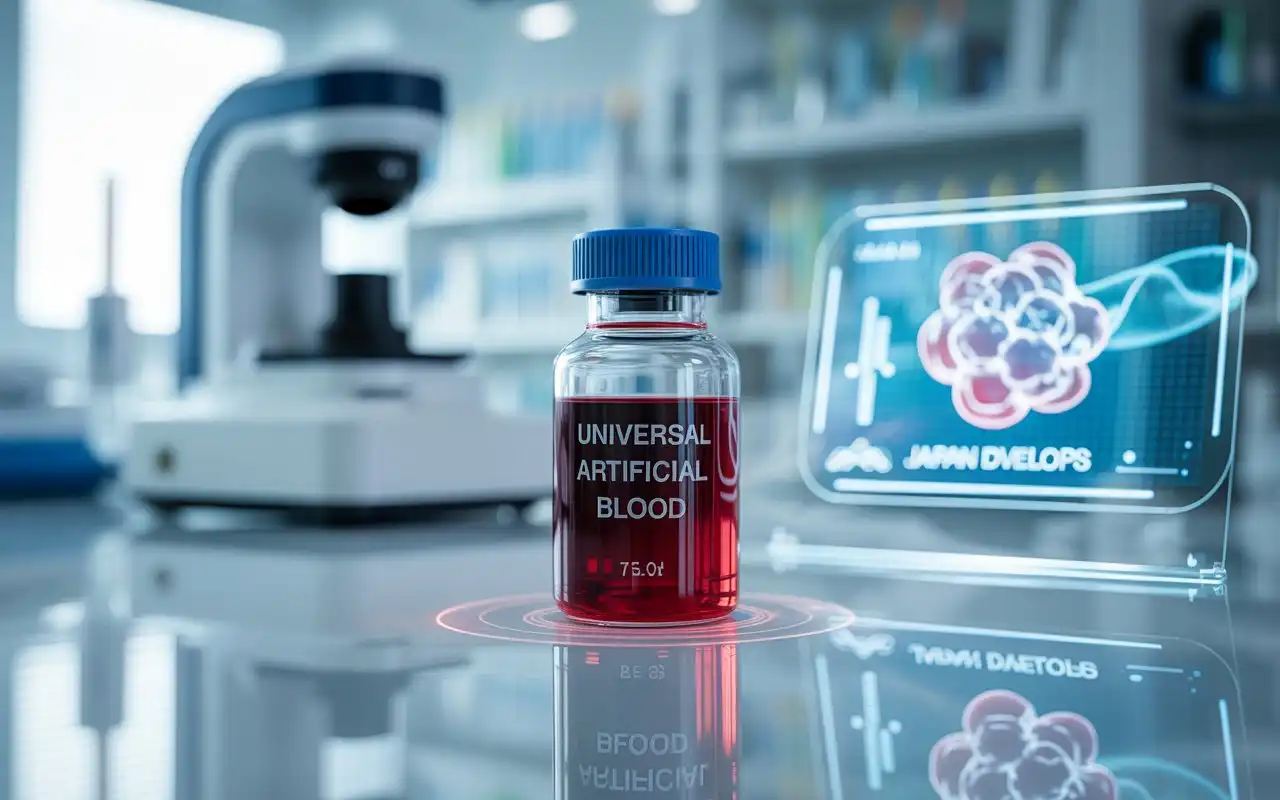A group of researchers in Japan has created synthetic blood that can potentially eliminate the need for matching blood types in transfusions. This can change the landscape of medical response in emergencies and wartime medicine.
As noted by The Japan Times, this new synthetic blood has performed remarkably well in animal studies and has carried out oxygen transport and clotting, the two primary functions of human blood. Researchers are optimistic that this development will improve the survival odds of many trauma patients, particularly in situations where blood matching is not feasible.
Adding to the statement, “Its storage is long-term, and use is immediate, regardless of the patient’s blood group,” another expert from the National Defence Medical College of Japan, who participated in the study, said this was his reasoning as to why the treatment is so effective.
Safety and Functionality Tests
Some preliminary tests using liposome-encapsulated haemoglobin as a base for the synthetic blood proved successful. This type of haemoglobin allows the synthetic blood to function as red blood cells, in that it can transport oxygen. In addition, some synthetic platelets were added to mimic the standard clotting system to abolish spurious bleeding.
According to ScienceAlert, this type of artificial blood did not cause significant immune reactions during testing. Along with its provable stability during storage, these factors suggest that it can be kept unused for prolonged periods, making it very useful for quick access in disaster zones, ambulances, and military field hospitals.
You can continue reading about artificial blood’s uses and possible applications in Nature.
A New Approach to E-Medicine
A saline solution has made a big difference, but it does not address the issues challenging emergency medicine. The strict use of blood in transfusions often leaves little blood available in developing countries.
It matters greatly when increasing the universal availability of blood products. Should new military transfusion technologies be adopted, saline in its expanded form will become common in the military on a global scale.
In tests using animal subjects, the National Defence Medical College team found that their synthetic blood could act the same way as red cells and platelets do. Using artificial blood instead of natural blood could make it possible to set up universal products for ambulances and emergency rooms. ScienceAlert reported that the blood substitute had no effect on the immune system and was correctly maintained over time.
Every sanguine component in the blood is made by adding haemoglobin-containing liposomes to red blood cells. In addition, platelets were made in the lab to match how blood coagulates.
The capacity to supply oxygen and clot in these dangerous trauma scenarios is immensely life-saving.
Synthetic blood is especially important in countries such as Pakistan, where a shortage of blood supplies leads to deaths that could otherwise be easily prevented. Such synthetic blood would be a game-changer for the nation’s emergency response systems, as lacking type-matching requirements and a shorter expiration date.
We are still a long way from this possibility, but there are ongoing human clinical trials and expected government permission soon. If achieved, there is tremendous potential to revolutionise transfusion technologies and create an impact on par with the introduction of vaccines and antibiotics.
While Japan seems to be leading the incorporation of new technologies into medicine, Germany, China, and the United States are also striving to further polish their inventions. Along with other health organisations, the WHO has clearly stated that there is an acute need to focus on developing health technologies for conflict-affected and neglected regions.
Every single year, the inability to access life-saving procedures such as blood transfusions claims millions of lives. Developing easily accessible and less restricted blood substitutes could greatly decrease mortality, especially in surgeries, childbirth, and other traumatic events requiring urgent blood.
While the rest of the world is waiting, Japan is moving to the next phase of its testing. Medical practitioners are tremendously eager for the day when blood substitutes developed in Japan can be used routinely, enabling usage for individuals who do not have blood compatibility concerns.








